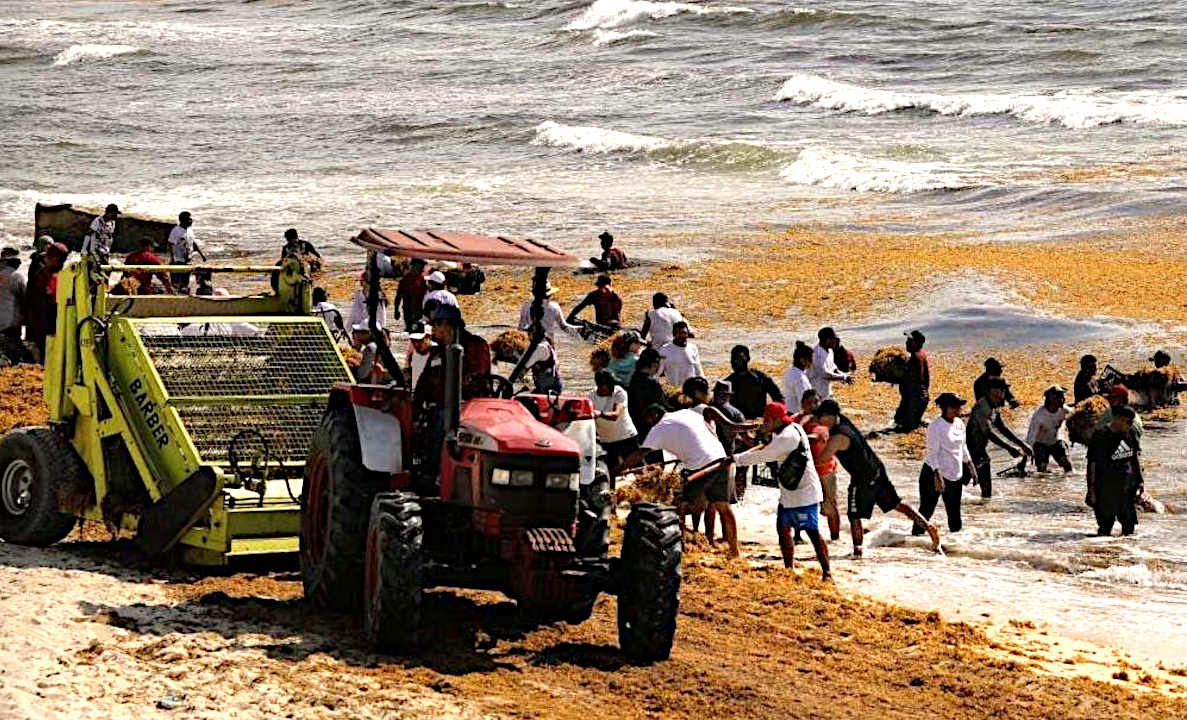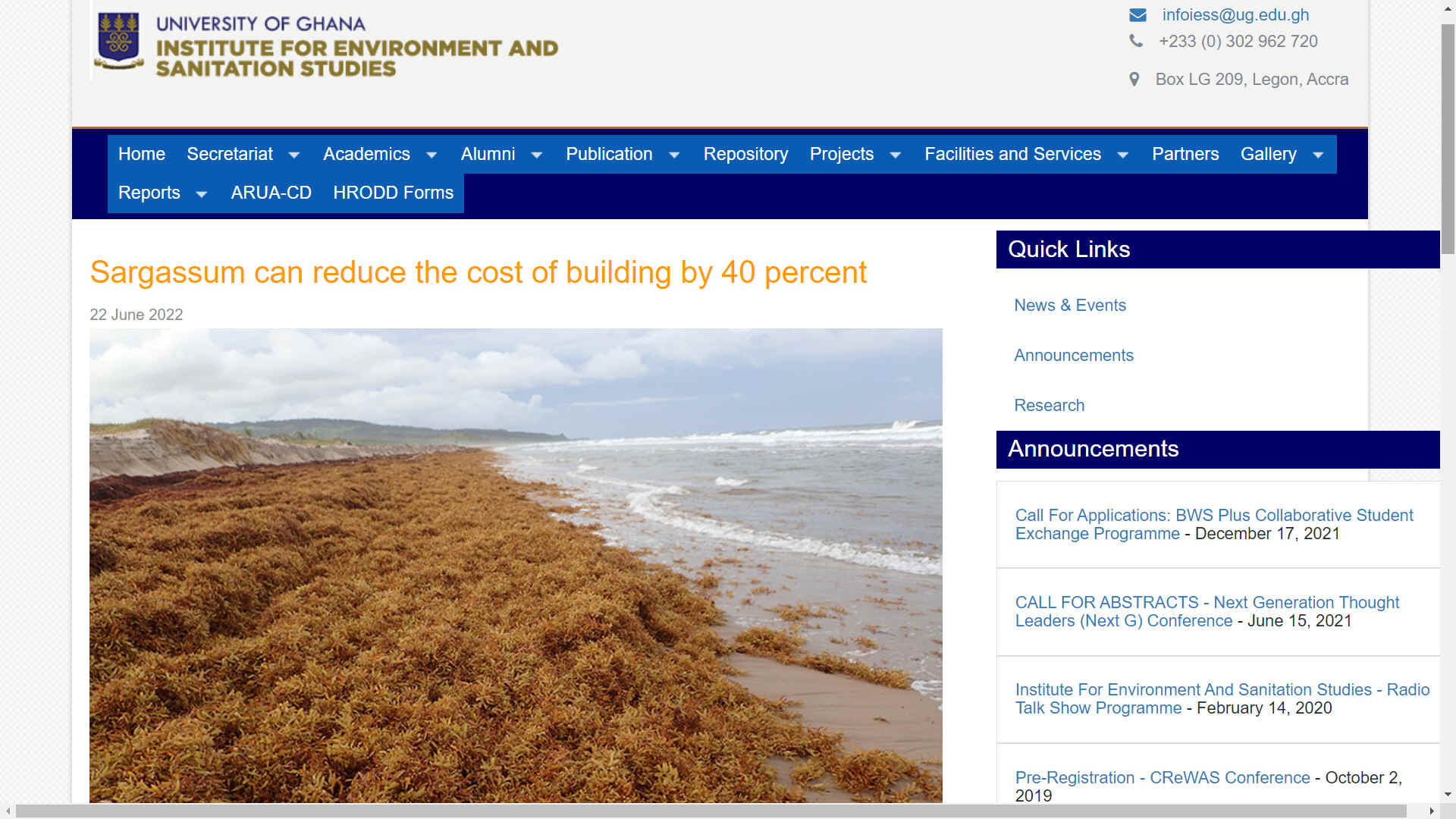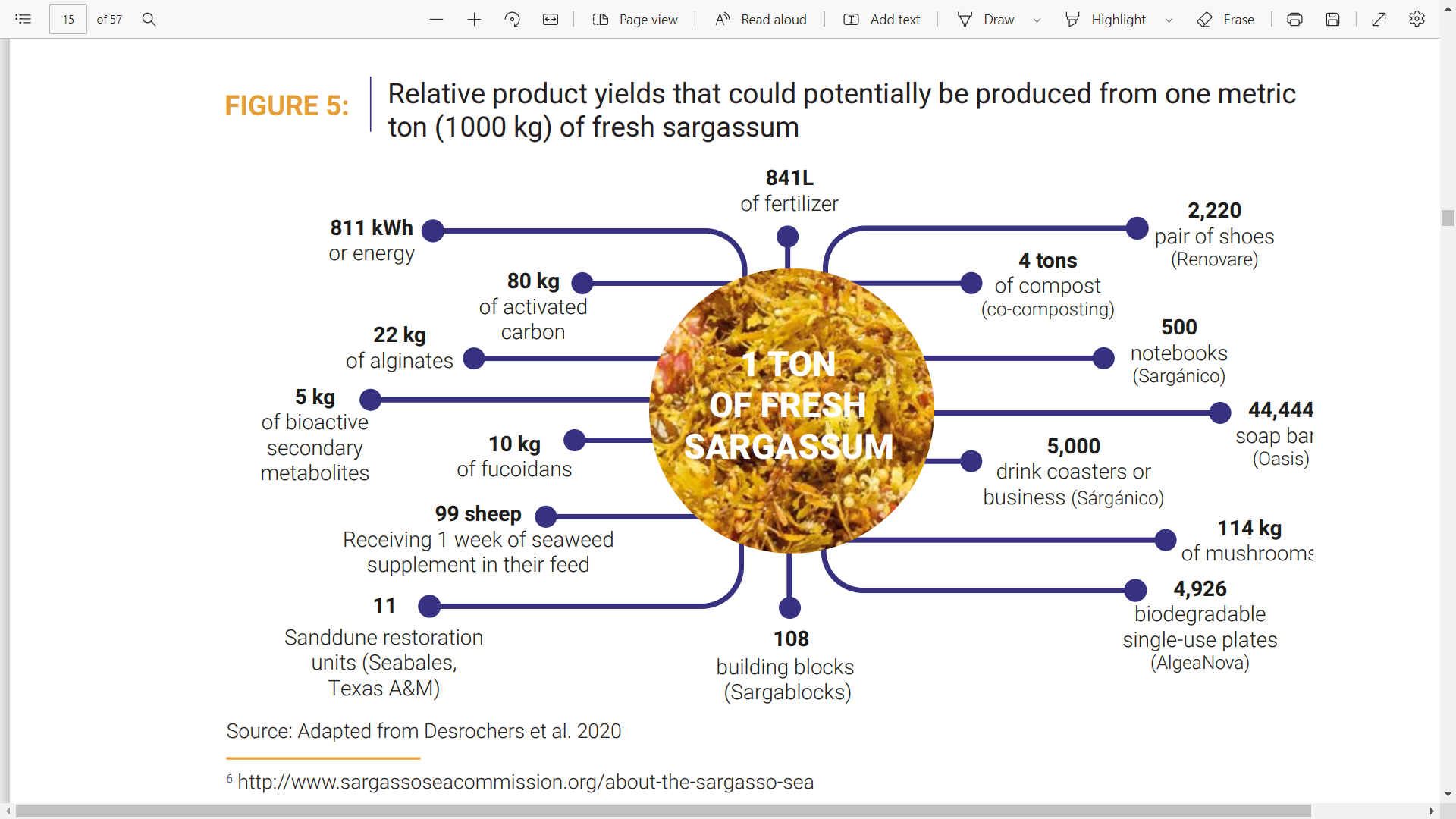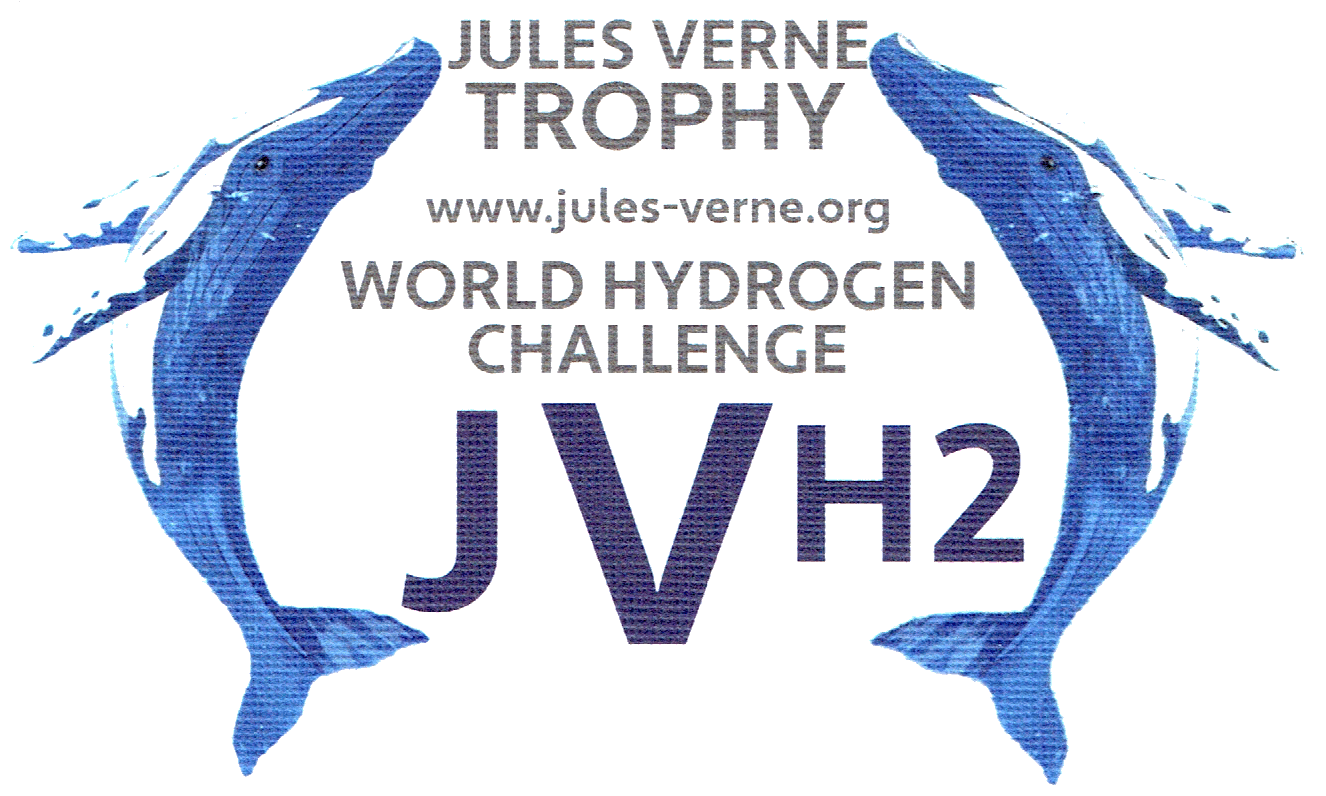|
BUILDING MATERIALS FROM SARGASSUM SEAWEED
PLEASE USE OUR A-Z TO NAVIGATE THIS SITE, OR SEE HOME
|
|
AUGUST 2022 - Climate change is causing misery in the Caribbean Sea and Gulf of Mexico, with the Sargasso Sea producing colossal sargassum blooms of 22 millions tons this year, an increase over 18 million tons in 2021. It would take a fleet of 300 specially adapted SeaVax machines, operating at a speed of one load per hour, to deal with such quantities. Clearly, that is not going to happen, where (by way of example) the world would not pay to clean the ocean of plastic, using equivalent fleets. The only sparkle on the brown tinged horizon is that sargassum can be a cash crop. Even so, the sums being bandied about don't come close to managing this crisis.
|
|
Sargassum has been at crisis levels for several years, but only recently have the Island nations affected by what amounts to a plague, put that stamp on the problem. Island Nations dependent on tourist dollars, to include the Gulf of Mexico coastal towns and cities, have been hit with beaches of decomposing sargassum, smelling of rotten eggs, attracting flies, causing ecological mayhem and potential health hazards. Hardly alluring for holiday makers, as they book their hotels in a formerly paradise location.
With an efficient method of harvesting the floating seaweed, there is potential to turn a nuisance into opportunity, such as to produce building blocks from compressed biomass, mixed with a stabilizing medium.
UNIVERSITY OF GHANA - INSTITUTE FOR ENVIRONMENTAL STUDIES
The use of Sargassum, an aquatic invasive weed, which is negatively impacting the activities of fishermen along the coast can reduce the cost of building by 40 percent.
LINKS
https://iess.ug.edu.gh/news-events/sargassum-can-reduce-cost-building-40-percent
|
|
SeaVax-Calypso™ & AmphiMax-Calypso™ SeaVax-Sargasso™ & AmphiMax-Sargasso™
|
|
UNEP - UNITED NATIONS ENVIRONMENT PROGRAMME
While 2020 was relatively mild in terms of sargassum volumes, and a global pandemic became the overarching worry, 2018 was record breaking in terms of sargassum volumes reaching Caribbean shores and 2019 was also significant.
Floating sargassum should not be construed as negative in and of itself – it is beneficial at sea, mainly as a unique pelagic habitat. However, the mass stranding of sargassum on coastlines has significant negative
impacts (biophysical and socio-economic), particularly on coastal communities and
livelihoods, public health, tourism and fisheries. This issue therefore represents an
The production of hydrogen sulphide negatively impacts air quality, results in very unpleasant odours, and prolonged exposure is unhealthy, especially for persons with underlying respiratory conditions. This is detrimental for coastal residents and beach users, whether local or visitors. Beach users who live elsewhere have the option to avoid impacted locations, while residents may be unable to avoid prolonged exposure.
Large quantities of sargassum also spoil the aesthetic appeal of Caribbean beaches, and inhibit access to nearshore waters. Both issues affect residents, local beach users and tourists, while the latter particularly impacts those whose livelihoods rely on the sea, such as fishers who may need to access the water to access their equipment and/or livelihood.
|
|
|
OCEAN CLEANING DRONE - As seen above, SeaVax is not suitable for harvesting sargassum in voluminous quantities. But the concept, or the equivalent, may be adapted (or specialliy developed) for the task. You'd still need autonomous fleet control, satellite comms and ocean current geodata, solar assistance and a capacious holding tank. But, the harvesting mechanics are different, as is the pickup head and transfer arrangements. Also assuming 24 hour operations, and factory ships to treat the recovered asset, for distribution across the globe. Then there is carbon sequestration. But who would pay for that? Nobody in power - that's for sure. It's all about the money for them- and they want a free lunch!
It would take a fleet of 300 specially adapted SeaVax machines, operating at a speed of one load per hour, to deal with 22 million tons of biological material. From our experience where we asked for funding to clean the ocean of plastic, it will be a massive uphill struggle - with fruitless lobbying efforts - to match the non-progress at Climate Conferences (FLOPS). It will take a working lifetime, unless, the problem becomes so great, that government react as if they were at war. And it is a war. Make no mistake. It's a struggle for the survival of our great grand children. We cannot stop our children suffering, because of corruption and irresponsible fossil fuel companies. We are too late for that, but with more Great Thunberg's, we might save the human race.
The sparkle on the newly brown tinged horizon is that sargassum can be a cash crop. Even so, the sums being bandied about don't come close to managing this crisis. What they need is a miracle, dealing with the root cause, which is warming of the oceans from climate change. Sadly, the cure for rising sea temperates is a million miles away, with present G20 policy stagnation - that stinks - like the hydrogen sulfide from rotting seaweed.
CARIBBEAN ISLANDS BY POPULATION
1 Cuba 11,252,999 29 Tortuga 25,936 30 Roatán 110,000
Governments might revise their policies, to most urgently curb global warming, hence ocean temperature rises that are causing the sargassum crisis. The is the root cause of the problem. Cleaning up the excess from the oceans and seas, is retrospective handling. That, unfortunately, it seems we will be lumbered with for at least 50 years hence.
|
|
|
|
|
|
BIOMASS - BUILDING MATERIALS - CANCER - CLOTHING & SHOES - CO2 SEQUESTRATION - COSMETICS FERTILIZERS - FOODS - MEDICINES - MINERALS - PACKAGING - SUPPLEMENTS - VITAMINS
|
|
|
PLEASE USE OUR A-Z TO NAVIGATE THIS SITE
This website is provided on a free basis as a public information service. copyright © Cleaner Oceans Foundation Ltd (COFL) (Company No: 4674774) 2022. Solar Studios, BN271RF, United Kingdom. COFL is a company without share capital whose founding objects are charitable, being not-for-profit.
|



